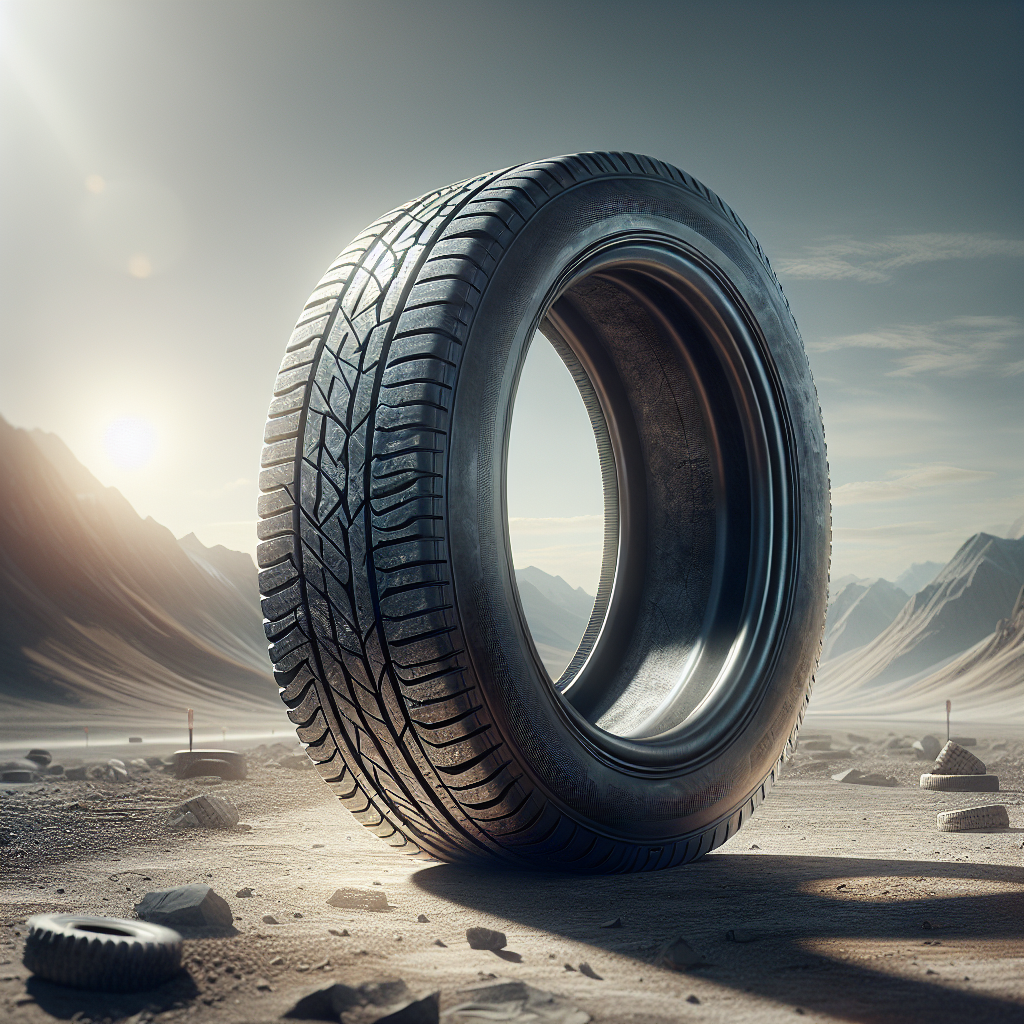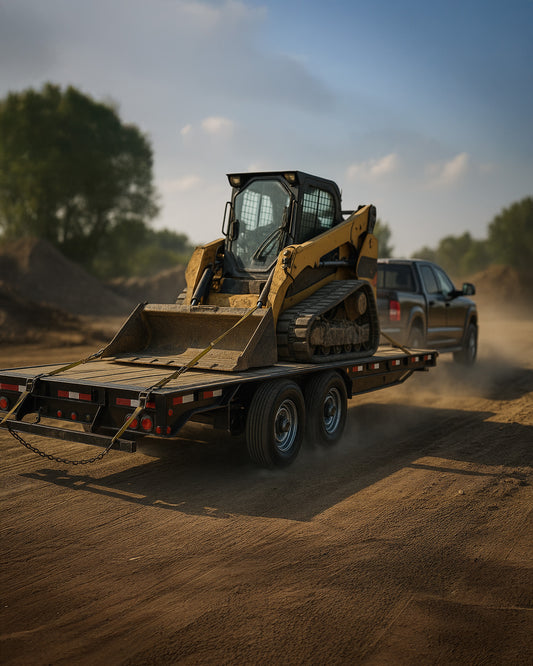

When considering how long can a tyre last, it's essential to understand the factors that influence tyre lifespan and durability. The average lifespan of a tyre can range from 25,000 to 70,000 miles, but various elements can significantly affect this range.
Some of the critical factors include:
- Driving Habits: Aggressive driving, such as rapid acceleration and hard braking, can wear down tyres much faster.
- Road Conditions: Rough terrains, potholes, and debris can contribute to quicker deterioration.
- Tyre Maintenance: Regular rotations, balancing, and proper inflation can extend the life of your tyres considerably.
- Climate: Extreme temperatures, both hot and cold, can impact the materials in tyres, leading to increased wear.
Additionally, the type of tyres used plays a significant role. For instance, performance tyres may offer enhanced grip but often wear out faster than standard all-season tyres.
To help ensure that your trailer tyres last as long as possible, investing in a reliable monitoring system is crucial. Tow with peace of mind, knowing that trailerwatchdog is standing guard.
Factors That Impact Tyre Longevity

Understanding the factors that impact tyre longevity is crucial for maintaining optimal performance and safety while driving. Several key elements contribute to how long your tyres will last, and being aware of them can help you make informed decisions.
- Tyre Quality: Higher-quality tyres often come with advanced materials and construction techniques, leading to better durability and longevity compared to cheaper alternatives.
- Load Capacity: Exceeding the recommended load capacity for your tyres can lead to increased wear and a higher risk of blowouts. Always ensure your trailer is within the specified limits.
- Temperature Fluctuations: Extreme heat can cause tyres to deteriorate faster, while cold weather can make them more rigid, affecting their grip and leading to uneven wear.
- Storage Conditions: Storing tyres in direct sunlight or damp environments can lead to premature aging. Keeping them in a cool, dry place helps maintain their integrity.
- Alignment and Suspension: Poor alignment or suspension issues can cause uneven wear on tyres. Regular checks can prevent these issues from becoming costly problems.
By understanding these factors, you can take proactive steps to enhance the lifespan of your tyres and ensure a safer driving experience.
Signs Your Tyres Need Replacement

Recognizing the signs that your tyres need replacement is essential for safe driving. Ignoring these indicators can lead to dangerous situations on the road.
Protect your trailer
- Tread Wear: Inspect your tyre tread regularly. If the tread depth is less than 1.6 mm, it’s time for a replacement. A simple way to check is the penny test: insert a penny into the tread; if you can see the top of Lincoln's head, your tyres are too worn.
- Cracks and Bulges: Look for visible cracks or bulges on the sidewalls. These defects can compromise the structural integrity of the tyre, increasing the risk of blowouts.
- Vibration or Noise: If you notice unusual vibrations or noises while driving, it could indicate uneven wear or internal damage. It's advisable to have your tyres inspected.
- Frequent Air Loss: If you find yourself inflating your tyres more frequently, it may signal a slow leak or damage that requires immediate attention.
- Age of Tyres: Even if tyres appear to be in good condition, they should be replaced every six years, regardless of tread wear, as rubber deteriorates over time.
Being aware of these signs can help you stay proactive about tyre maintenance, ensuring safety and performance on the road.
Maintenance Tips for Extending Tyre Life

To maximize the lifespan of your tyres, implementing a regular maintenance routine is crucial. Here are some effective maintenance tips for extending tyre life that every vehicle owner should consider:
- Regular Inspections: Frequently check your tyres for signs of wear, damage, or uneven tread. Early detection can prevent more significant issues down the road.
- Proper Inflation: Maintaining the correct tyre pressure is vital. Under-inflated tyres can lead to increased wear and reduced fuel efficiency, while over-inflated tyres can cause a harsher ride and greater risk of blowouts. Check tyre pressure monthly and before long trips.
- Rotation: Rotating your tyres every 5,000 to 7,500 miles helps ensure even tread wear. This practice can significantly prolong the life of all four tyres and improve handling.
- Alignment: Misaligned wheels can cause uneven wear and affect vehicle handling. Regularly check and adjust wheel alignment, especially after hitting potholes or curbs.
- Balancing: Ensure that your tyres are balanced correctly. Unbalanced tyres can lead to vibrations, reduced fuel efficiency, and uneven wear, all of which can shorten their lifespan.
- Drive Responsibly: Aggressive driving, such as rapid acceleration and hard braking, can increase tyre wear. Adopting a smooth driving style will help maintain tyre integrity.
By following these maintenance tips, you can not only extend the life of your tyres but also enhance your vehicle's overall performance and safety.
How Climate Affects Tyre Performance

The climate plays a significant role in determining tyre performance and longevity. Understanding how different weather conditions impact your tyres can help you make informed decisions regarding maintenance and replacement. Here are the key ways in which climate affects tyre performance:
- Temperature Extremes: High temperatures can cause tyres to wear out faster due to increased friction and heat buildup. Conversely, cold temperatures can lead to a drop in tyre pressure, which can negatively affect handling and traction. It's essential to monitor and adjust tyre pressure according to seasonal changes.
- Humidity and Rain: Wet conditions can significantly impact tyre grip. Tyres designed for wet weather typically feature deeper treads and special rubber compounds that enhance traction. In regions with frequent rain, using appropriate tyres can improve safety and performance.
- Snow and Ice: In colder climates, winter tyres are specially designed to provide better grip on snow and ice. Their unique tread patterns and rubber compounds remain flexible in low temperatures, enabling better control. All-season tyres may not perform adequately in severe winter conditions, leading to increased risk of accidents.
- UV Exposure: Prolonged exposure to sunlight and UV rays can cause tyre rubber to deteriorate, leading to cracks and reduced lifespan. Parking in shaded areas or using tyre covers can help mitigate this damage.
Understanding these climatic factors allows you to choose the right tyres for your environment and maintain them properly, ensuring optimal performance and safety throughout the year.
The Importance of Regular Tyre Inspections
Regular tyre inspections are crucial for ensuring the safety and longevity of your vehicle's tyres. Neglecting this essential maintenance task can lead to unexpected failures, reduced performance, and even accidents on the road. Here’s why you should prioritize regular tyre inspections:
- Identifying Wear and Tear: Over time, tyres naturally wear down due to road friction. Regular inspections help you spot uneven wear patterns, which can indicate alignment or suspension issues, allowing you to address these problems before they escalate.
- Monitoring Tyre Pressure: Maintaining the correct tyre pressure is vital for optimal performance. Inspections help ensure your tyres are neither over-inflated nor under-inflated, which can affect fuel efficiency and handling.
- Checking Tread Depth: The tread on your tyres is essential for traction, especially in wet conditions. Regularly checking tread depth ensures that your tyres maintain adequate grip, reducing the risk of hydroplaning and improving overall safety.
- Avoiding Catastrophic Failures: Issues like bulges, cracks, or punctures can lead to blowouts. Regular inspections can catch these problems early, allowing for timely repairs or replacements, ultimately preventing catastrophic failure events.
Incorporating regular tyre inspections into your vehicle maintenance routine is a proactive approach to safety. Tow with peace of mind, knowing that trailerwatchdog is standing guard.




